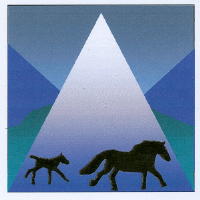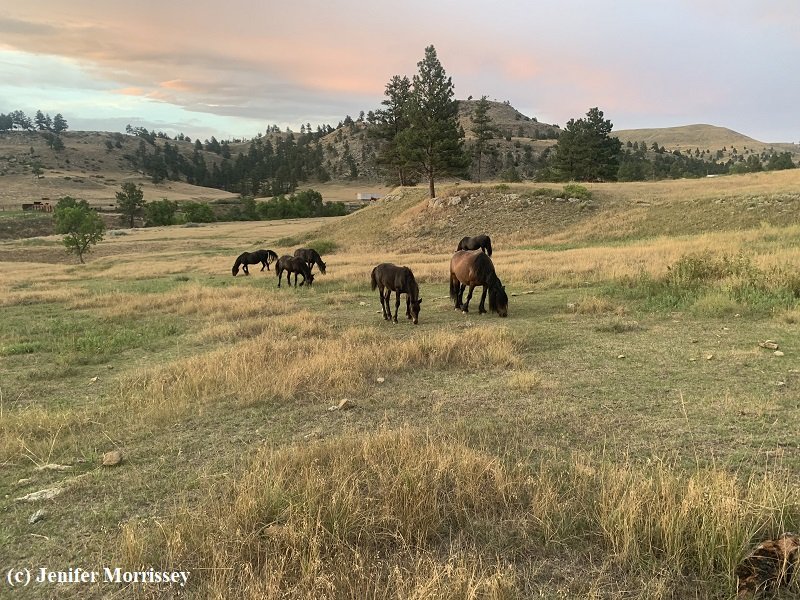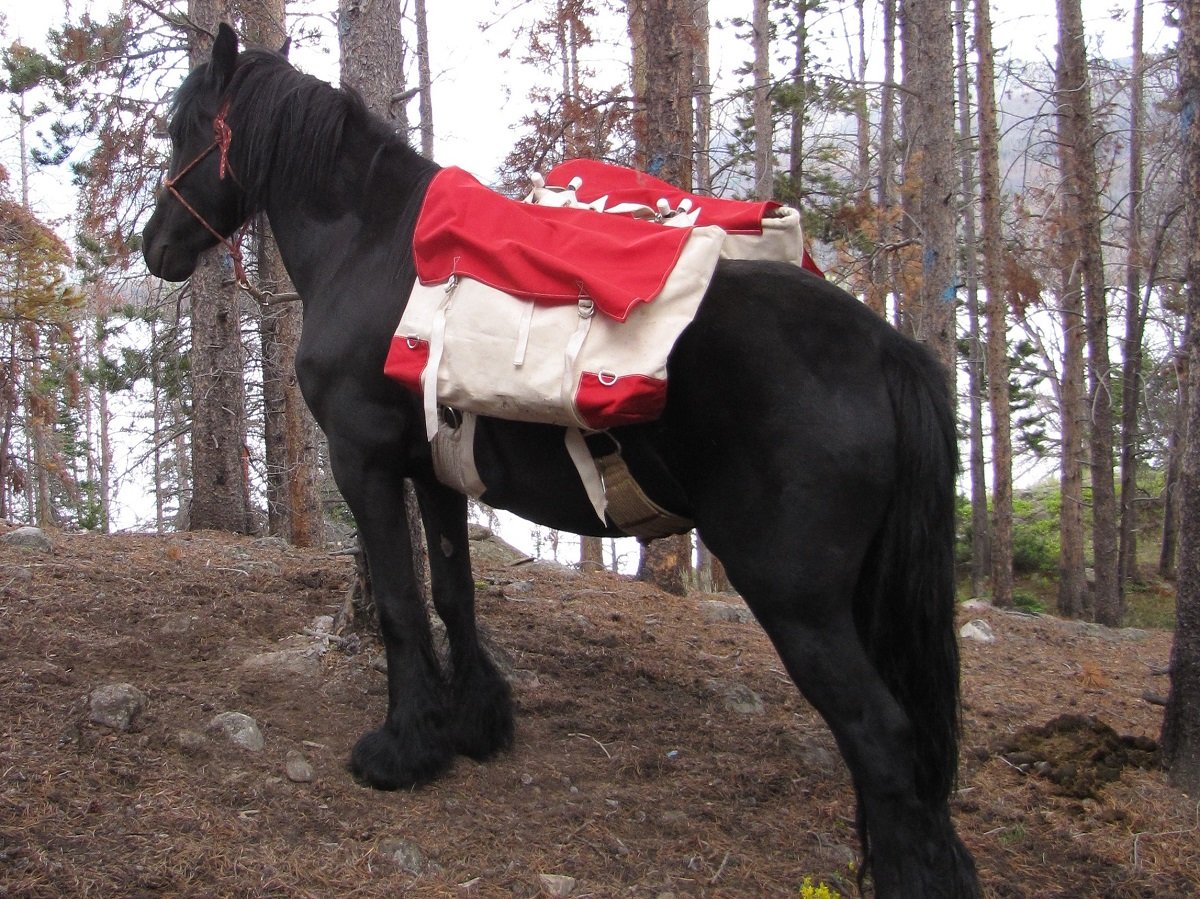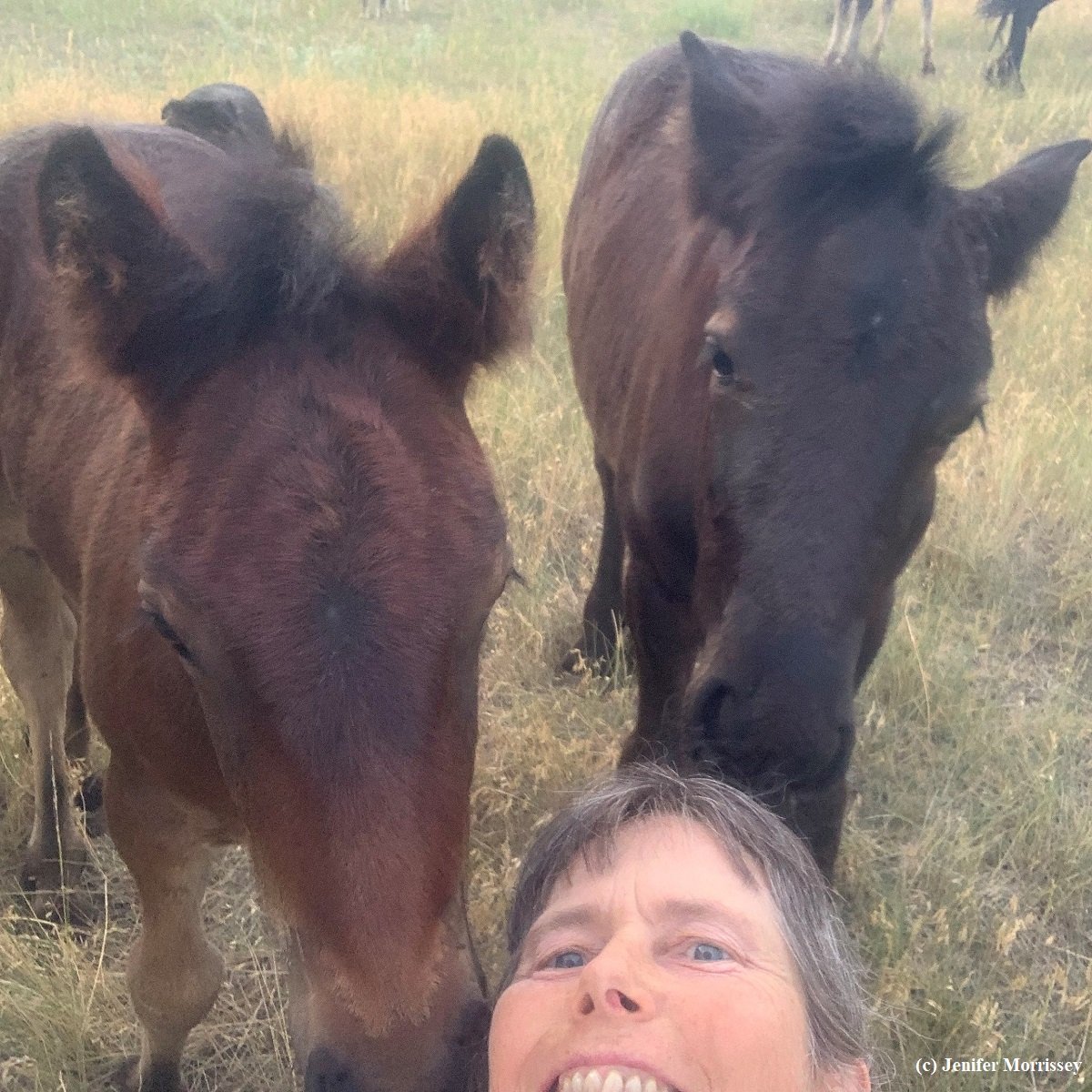Polo and Fells and Fall River County
/My Fell Ponies here are grazing on native buffalo grass which creates a durable turf that was important to early polo enthusiasts in our county.
The Fell Pony Society is celebrating its centenary in 2022. I have always been intrigued by the roots of the Society being in polo ponies. For instance, on the ‘About’ page of the Fell Pony Society website, it says, “Pony breeders had begun to record pedigrees in the second half of the 19th century, and the first Fell ponies were registered in the Polo and Riding Pony Stud Book in 1898.” (1) Closer to home for me, in 2022, I learned that the county where I live had a polo pony breeding farm at one time almost 100 years ago and there’s a connection to that effort on the ranch where my Fell Ponies and I now live.
This polo pony participated in the 1909 match which put the US on the international polo map when the team beat the UK for the Westchester/International Cup. From the 1925 edition of Types & Market Classes of Livestock.
The Polo Pony Stud Book was founded in England in 1893. Its aim was to support the breeding of ponies for the playing of polo and be a place for the registration of native pony stock, including the Fell. Native ponies were of interest to the Polo Pony Stud Book because of their hardiness and because individuals typically possessed “a clean-cut head, small ears, bright full eye, and well-curved nostril...” (2) You can see pictures of three prize-winning Fell Pony mares from the Polo Pony Stud Book era of Fell history on the Fell Pony Museum website (click here).
Polo horses and riders on the 7-11 Ranch 9 miles NE of Hot Springs, South Dakota. Courtesy Pioneer Museum, Hot Springs, SD
It was in 1925 that prominent businessman F.O. Butler announced he was bringing polo to his adopted home of Fall River County and Hot Springs, South Dakota. He had purchased the 7-11 Ranch north of town and was dedicating the ranch to polo pony breeding. He had previously established a polo club in Illinois where his permanent residence was. His family became interested in polo after 1909 when the US beat the British team to win the coveted International/Westchester Cup. The first known game of polo in Fall River County occurred in 1925 and was referred to as ‘hockey on hoof’ in the newspaper!
Polo being played on the 7-11 Ranch. Courtesy Pioneer Museum, Hot Springs, SD
In his book about F.O. Butler called Paper Mountain, author Robert Karolevitz writes, “South Dakota was, as one sportswriter put it, an ideal place for polo. There was plenty of flat ground not too valuable for other uses. The prairie turf was buffalo-tough and required little maintenance. What’s more: most people knew one end of a horse from the other.” (3)
Butler brought in breeding stock from Wyoming, Montana, California, New Mexico, Mexico, and Cuba. By 1928, there were 94 mares and three stallions at the 7-11. When F.O.’s son said he wanted hardiness and coolheadedness in his polo ponies, F.O. replied, “All right. The colts will get hardiness feeding over the hills and wearing their feet tough on the sand rock. That way they will develop bone and muscle as all of the western ponies have. The coolheadedness we will get by selecting our brood stock.” (4) In those words, there are certainly echoes of how Fell Pony characteristics develop.
Karolevitz also wrote, “[Butler] brought in a ten-ton roller to smooth out the new polo field at the ranch in time for the Hot Springs team to ride circles around the Fourth Cavalry foursome from Fort Meade, 13 to 2. [Butler’s wife] Fannie served tea after the game, a social touch not particularly commonplace in cowboy country.” (5)
In 1916, a park on College Hill in Hot Springs had a half-mile horse race track and by the next year the park had grandstands, bleachers, stables, and a full-time grounds keeper for numerous types of community events. F.O. Butler bought the park in the late 1920s or early 1930s and later donated to the town of Hot Springs. The park carries his name today. (6)
Butler Park in Hot Springs, SD now supports modern sports, but at one time there were stables where the library is in the background.
Depression and drought in the early 1930s ended Fall River County’s enthusiasm for polo, but the 7-11 continued to provide ponies to other parts of the country until a turning point of ranch operations in 1937. Polo was still being played in the Black Hills of South Dakota as recently as 2015. (7)
John, Olaf and Alvin Aaberg were three of the earliest Hot Springs polo enthusiasts. John became manager of the 7-11 Ranch after Butler purchased it and went on trips to buy breeding stock with Butler. These Aaberg men were great-great-uncles to several residents of the ranch where I live today. Occasionally the Aaberg descendants here give assistance to my Fell Pony herd.
Polo mallets, helmet and balls from the era of polo in Fall River County, South Dakota. Items in the collections of the Pioneer Museum, Hot Springs, South Dakota
Fell Ponies are descended at least in part from the extinct Galloway Pony. The Galloway also contributed to the Thoroughbred. The Fell Pony Museum website says, “Although the ancestors of our modern Fell ponies did include Galloways, the well-bred racing "Galloways" were derived from the native "Scotch" pony by several generations of maternal descent; making our Fells distant cousins-many-times-removed of today's racing Thoroughbreds.” (8) So perhaps today’s Fell Ponies living in Fall River County can trace very, very distantly in two different ways to an ancestor of the polo ponies that once were also born and raised here, either through the Galloway or through the Poly Pony Stud Book. It’s fun to ponder!
I am indebted to Dawn Johnson at the Pioneer Museum in Hot Springs for locating and showing me the Museum’s polo-related collections and describing her family’s connection to polo history in Fall River County. And I am once again indebted to Sue Millard, curator of the Fell Pony Museum website, for the treasure trove she has collected there. Finally, I am grateful to my friend Tracy Plessinger for pointing out the connection between the beautiful 7-11 Ranch and polo ponies.
Karolevitz, Robert F. Paper Mountain: The Story of Frank Osgood Butler. Brookings, SD: South Dakota State University Foundation Press, 1980, p. 46.
Karolevitz, p. 47.
Karolevitz, p. 48.
https://www.fellponymuseum.org.uk/fells/17_18C/galloways2.htm
© Jenifer Morrissey, 2022




















































